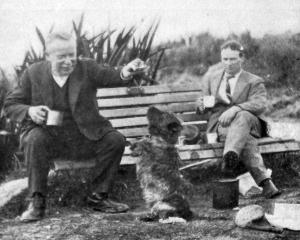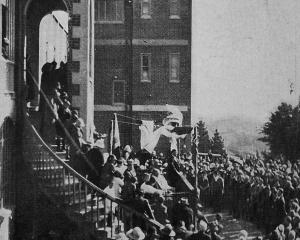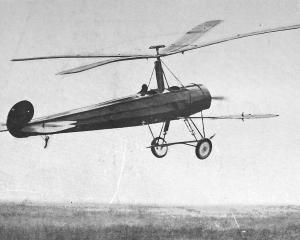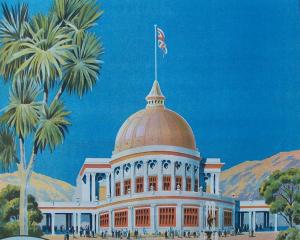The position was put very clearly by the Minister that if the mills were not prepared to supply what was wanted for the troops, they would have to be taken over by the Government.
To manufacture what was required will mean 12,000 bales of greasy wool.
One million yards of material are wanted for uniforms alone, and a similar quantity for overcoats.
Wool will also be wanted for about one million blankets.
The mills in New Zealand will therefore be almost exclusively engaged on army contracts, and the price of the goods will not be fixed until after the opening wool sale in the dominion.
Lack of skilled labour is preventing the mills working day and night. It is therefore probable that woollen mill workmen will be barred from enlisting.
• A resident of Wanganui vouches for the following discovery.
At Awahuri, on his son's farm, was hanging an old oil drum, which had not been used for some time.
When it was pulled down a night or two ago some squeaking and peculiar noises were heard.
Upon investigation a little brood of young starlings was found.
The parent birds had apparently made their entrance and exit through the bunghole, and, as it may be noted that the drum was standing upright, with the hole - about 1 1/2 inches in width - at the top, some idea may be gathered of the difficult feat undertaken by the parent birds in the effort to go out and search for feed for their young.
In such a small compass there was not much chance to get on the wing, and the problem arises: How did the older birds get out of the drum, when the exit was so small, and a little over two feet only from the bottom?
However, the fact that the young starlings, which were almost fully fledged, were quite fat and strong, proved conclusively that they had succeeded in doing so.
• An interesting discovery was made by the Wellington police.
A fireman from one of the Home boats was apprehended for insobriety, and after he had submitted to the usual search by the officer at the police station, it was found that he was a remarkable person in a way.
Discharges found in his pockets proved him to be a survivor from two great marine disasters.
One discharge showed that he was a fireman on the Empress of Ireland, when she was sunk in a collision in the St Lawrence River on May 29, 1914, and over 1000 lives were lost.
The other discharge showed that the man was employed as a fireman on board the Lusitania when she was sent to the bottom off the coast of Ireland by German submarines on May 7 of this year, and 1500 lives were lost.
• A rather foolish person who was indiscreet enough to air his folly in the Kaponga Hotel dining room on Friday by announcing that he would not salute King George or uncover in his honour, was allowed to finish his meal and then quietly called out on ''urgent business'' by another visitor to the hostelry and given a severe thrashing as a lesson in loyalty and manners.
• Since the war started very little has been heard of Sir Ernest Shackleton's trans-Antarctic Expedition.
The expedition is now at its winter quarters somewhere in the Weddel Sea.
It is equipped with a wireless receiving apparatus, and on the first day of every month, from the Admiralty station in the Falkland Islands, messages are received. - ODT, 4.11.1915.
• COPIES OF PICTURE AVAILABLE FROM ODT FRONT OFFICE, LOWER STUART ST, OR WWW.OTAGOIMAGES.CO.NZ












